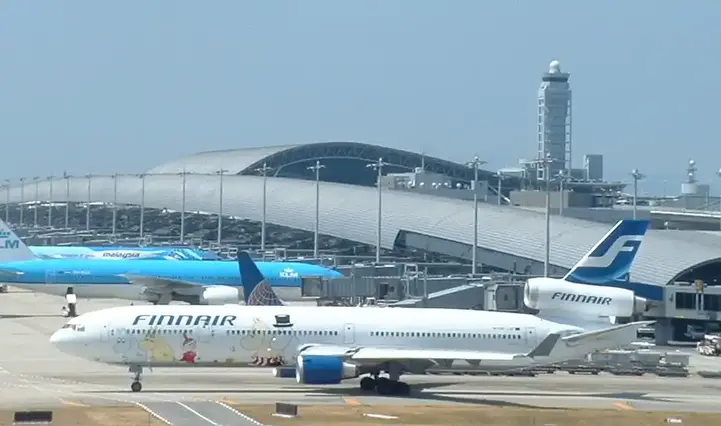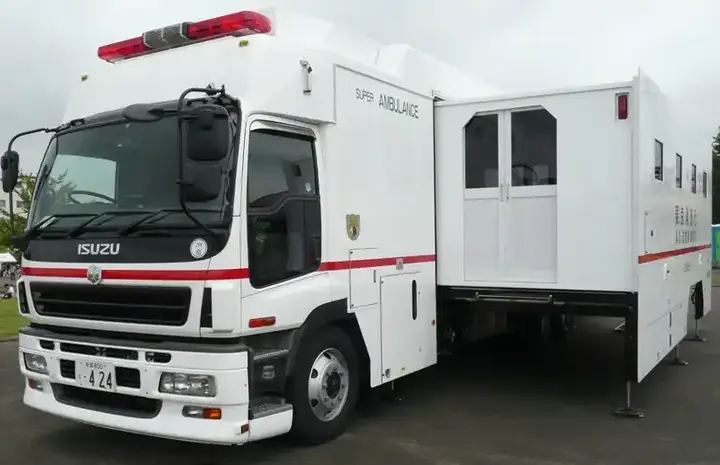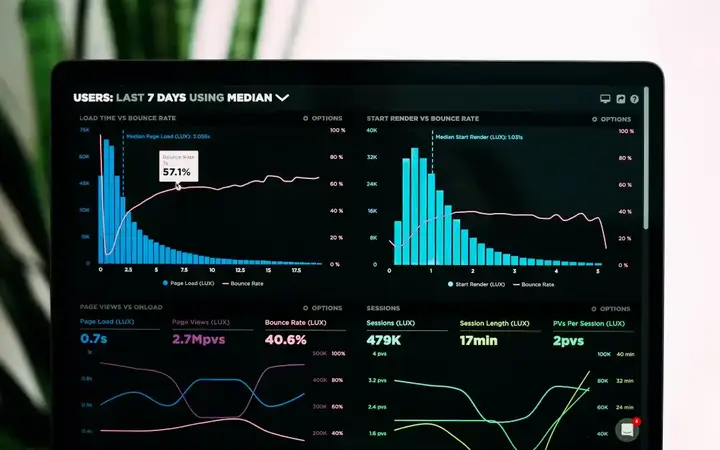The most impressed Japanese techniques in modern times
Japan is known for its innovative culture, its fondness for inventions that are both exotic and useful, and for its creativity and innovations that defy expectations. Japan has long been known for providing innovative solutions to everyday problems, and Japanese inventions have become a symbol of creativity and advanced technology. It is the country that has always been known for introducing strange and unique inventions. These inventions are just a few examples of Japan's creativity and belief in the importance of innovation in solving problems.
Show key points
- Japan has gained worldwide recognition for its unique blend of quirky yet practical inventions that creatively solve everyday problems.
- Japanese culture fosters innovation through its encouragement of risk-taking, acceptance of failure, and a strong passion for technological advancement.
- Healthcare robots in Japan are revolutionizing elderly care by assisting with daily tasks, monitoring health, and providing emotional support.
- ADVERTISEMENT
- Despite their benefits, the high cost and perceived lack of human touch present challenges to the wider adoption of healthcare robots in Japan.
- Karaoke, invented in Japan, transformed global entertainment by offering a fun and accessible way for people to enjoy music and express themselves.
- Kansai International Airport stands as a marvel of engineering and design, built on an artificial island and playing a strategic role in Japan’s global connectivity.
- Japanese super ambulances represent a significant leap in emergency care, with spacious interiors and advanced medical equipment that improve patient survival rates.
Notable Japanese inventions include a heated toilet seat, which provides comfort during the cold winter months, an umbrella that also acts as a tool for self-defense, and a noise cancellation fork that hides the loud sound of devouring while eating.
Recommend
These bizarre inventions demonstrate Japan's ability to think outside the box and come up with practical solutions to everyday challenges.
But what is the secret of their creativity?

The creativity of the Japanese is attributed to several factors, including:
Passion for innovation: Japanese society encourages creative thinking and the search for new solutions to problems.
Interest in technology: The Japanese make significant investments in research and development, which helps them innovate new technologies.
Culture: Japan's culture encourages failure and learning from mistakes, helping inventors experiment with new ideas without fear.
Now let's see together the most important Japanese inventions that already exist in the modern era, which had a great impact on ordinary life, or at least received tremendous media light, and was talked about in several major media outlets...
Healthcare robots in Japan:

Japan faces growing demographic challenges, as the number of older people increases and the working-age population decreases. Healthcare robots have been introduced as a promising solution to alleviate the burden of healthcare labor shortages and improve the quality of life of older people.
They are robots specifically designed to perform specific tasks in healthcare, such as:
Help seniors with daily activities: such as bathing, eating, and commuting.
Provide physical therapy: such as helping patients do rehabilitation exercises.
Monitoring patients: such as monitoring vital signs such as blood pressure and heart rate.
Provide psychotherapy: such as talking to patients and providing emotional support.
A major thrust of using healthcare robots has been to improve the quality of life of older people, helping them stay independent at home longer. In addition, it reduces the workload on healthcare providers from routine tasks, allowing them to focus on more complex tasks. This also includes (relatively) lowering health-care costs, certainly relative to the standard of living of the individual, and the level of the Japanese economy.
Despite significant and promising advances in these technologies, healthcare robots are still expensive. Some people also fear that healthcare robots will dehumanize healthcare. It is the most important factor in health, of course. It was therefore difficult to accept them by patients, as some patients preferred to receive care from human caregivers.
However, the use of healthcare robots is expected to grow significantly in the coming years. As technology evolves, healthcare robots will become smarter and more capable of performing more complex tasks.
Healthcare robots are a promising medical revolution in Japan. It is expected that as these challenges are overcome and spreads wider, healthcare robots will play an important role in improving the quality of life of older people and providing better healthcare for all.
Examples of healthcare robots in Japan:
Pepper: It is an interactive robot that can help seniors with daily activities and provide emotional support.
HAL Robot: It is a structural robot that helps patients do rehabilitation exercises.
RIBA robot: It is a robot that can monitor the condition of patients and provide psychotherapy.
Karaoke: a Japanese invention that changed the world of entertainment

Karaoke is a popular entertainment technique that allows users to sing with music recorded on a screen displaying the lyrics. This technique originated in Japan in the late sixties, and has since spread to all parts of the world. Today, karaoke is one of the most popular forms of entertainment in the world. Karaoke machines can be found in bars, clubs, restaurants and cottages. There are also many karaoke apps for smartphones.
Karaoke originated as a way to help people enjoy singing without the need for musical accompaniment. His inspiration was inspired by the "Goku" instruments that were popular at the time, which allowed people to listen to music recorded on coins.
Initially, karaoke was an expensive technique, but over time, it became more user-friendly and less expensive. In the eighties, home karaoke machines appeared, allowing people to enjoy singing in their homes.
Karaoke has revolutionized the world of entertainment. It has become a way for people of all ages and backgrounds to express themselves and enjoy music. Karaoke helped improve singing skills, boost self-confidence and create an atmosphere of fun and cheerfulness.
The invention of karaoke is an important Japanese achievement. This invention changed the world of entertainment and offered people a new way to enjoy music and express themselves.
Kansai International Floating Airport: Japan's Gateway to the World

Kansai International Airport is located on an artificial island in Osaka Bay, Japan. It is one of the busiest airports in Asia, and a major gateway for international flights to Japan.
One of Japan's most important airports, it connects Japan to the world through direct flights to more than 100 international destinations.
Kansai International Airport was opened in 1994 after many years in planning and construction. The project faced many challenges, including building an artificial island in the sea and dealing with seismic hazards. and the high cost of construction and concern about its impact on the environment. Kansai International Airport has many features, including:
Its unique architectural design: The airport was designed by architect Renzo Piano, and is considered one of the most famous engineers in Japan. The airport is distinguished by its unique architectural design, which resembles an artificial island in the shape of a bird.
Operational efficiency: The airport is one of the most efficient in the world, with short flight latency. It is among the world's busiest airports.
Diverse facilities: The airport has many facilities, and the airport also offers a wide range of services to passengers, such as shopping stores, restaurants and hotels.
Strategic location: The airport is located in close proximity to Osaka, Japan's third largest city.
Kansai International Airport has received numerous international awards and recognitions, including:
Best Airport in the World by Airports Council International in 2001.
Best Interior Design Award by the Interior Design Awards in 2002.
Kansai International Airport has contributed significantly to the development of the region, attracting investments and creating jobs. The airport has also helped boost tourism in Japan as it is a model for modern airports and efficiency.
Super Ambulance

Super ambulances from Japanese companies are a revolution in the world of emergency and healthcare. These vehicles are distinguished by their innovative design and cutting-edge technologies aimed at improving emergency patient care.
What are super ambulances?
They are ambulances specifically designed to provide superior medical care to patients in emergency situations. These vehicles are large enough to allow more space for medical instruments, and are equipped with the latest medical technology, such as ventilators and heart monitors.
Superambulance features:
More space: The large space allows for more space for medical instruments, allowing for more effective medical care.
Advanced technologies: Equipped with the latest medical technology, such as ventilators and heart monitors, allowing for better medical care for patients.
Innovative Design: Its design features large windows that let in natural light, and its seats are designed for patient comfort.
High speed: Despite the large size and weight of these vehicles, they are characterized by their high speed, which allows them to reach the scene more quickly.
Superambulances have had a significant impact on the emergency world, helping to improve patient care by providing better medical care to patients in emergencies with advanced capabilities. It also reduced the response time by the speed of these vehicles. Not to mention saving many lives by providing immediate medical care.
Japanese companies such as Mitsubishi and Isuzu, known for their high quality equipment and vehicles, plan to develop more super ambulances in the future. The company aims to develop more efficient and effective vehicles in providing better medical care to patients in emergency situations.
Thus we are waiting for more strange and useful inventions from Japan in the future.
![]()
Jobs that will disappear and others that are needed due to artificial intelligence
AI is evolving fast, replacing many jobs that involve routine tasks like data entry, customer service, and even accounting. But instead of fear, this shift brings new opportunities in fields like AI development, cybersecurity, and creative innovation—where human skills in critical thinking and empathy are more needed than ever. more- ADVERTISEMENT
![]()
The most important labor market skills - how to become a data analyst?
Data analysis has become a top-demand job worldwide, growing fast due to tech advancement. With skills in math, stats, and tools like Python or Excel, anyone—even without a related degree—can succeed in this field if they have a passion for numbers and insights. more- ADVERTISEMENT
![]()
Despite software piracy - how to win Microsoft?
Despite Windows piracy, Microsoft thrives with massive profits from OEM deals, cloud services like Azure, Office 365, and products like Xbox and Surface. Its strong brand, user base, and constant innovation keep it ahead, while many users still prefer legal software for security and reliability. more- ADVERTISEMENT
![]()
How Qatar successfully staged the 2022 FIFA World Cup
Qatar’s 2022 FIFA World Cup was more than a tournament—it showcased Qatar’s world-class stadiums, eco-friendly designs, and flawless planning. With thrilling matches, stars like Messi and Mbappé, and a legendary final, it left a powerful legacy of sports, innovation, and global unity. more- ADVERTISEMENT
![]()
Why can't bots click on the "I'm not a robot" box on sites?
Why Can’t Robots Click the 'I’m Not a Robot' Box on Websites more- ADVERTISEMENT
![]()
5 color effects on how much you eat
Colors around you can sneakily influence how much you eat. White, red, orange, and yellow can trigger overeating, while blue, purple, black, and brown might help you cut back. Green invites healthy choices. So, your plate and wall color might just be helping—or hurting—your diet without you knowing it. more- ADVERTISEMENT
![]()
A book you may be interested in: Dopamine fasting
A book that might interest you - Dopamine Fast more- ADVERTISEMENT
![]()
Will the earth keep heating up?
The summer of 2023 brought record heat, fierce wildfires, and deadly monsoons—clear signs of worsening climate change. Scientists warn we’re edging close to the 1.5°C global warming limit, urging urgent action. Real change means cutting emissions now and rethinking our everyday choices—are we ready to act? more- ADVERTISEMENT
![]()
Post-pandemic travel: reshaping the future of tourism
The pandemic reshaped travel, pushing people toward local, safer, and more personalized adventures. Technology now guides safer journeys, while hotels and airlines adapt with flexible and health-focused options. As the world reopens, travelers seek meaningful, sustainable experiences—reflecting a new era of conscious and responsible tourism. more- ADVERTISEMENT
![]()
A book that may interest you: 52 practical rules for success
A book that might interest you - Fifty-Two Rules of Thumb for Success Without Losing Yourself more- ADVERTISEMENT





















